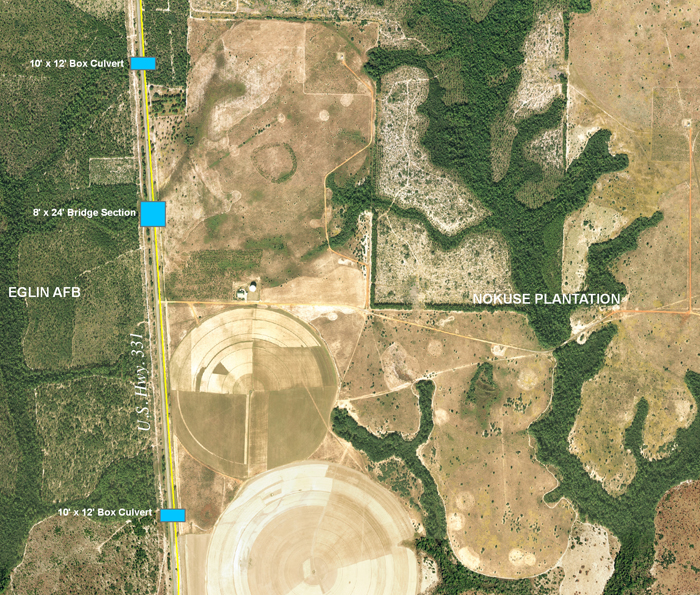
As we travel along U.S. Hwy. 331 between Freeport and DeFuniak Springs, many folks do not realize they are passing through two large wildlife conservation areas; Eglin Air Force Base Wildlife Management Area to the west and Nokuse Plantation to the east. With two wildlife conservation areas, and a busy highway, one must wonder how wildlife manages to safely cross the heavily traveled highway.
Completed in 2012, Nokuse Plantation constructed what are called eco-passages. Barely seen from above, three environmentally-friendly passages span underneath U.S. Hwy. 331, safely directing wildlife. Designed by Dr. Matt Aresco, director of Nokuse Plantation, the project was a collaboration of M.C. Davis, owner of Nokuse Plantation, Eglin Air Force Base and the Florida Department of Transportation.

The three under-highway crossings consist of an 8 ft. x 24 ft. bridge section in the middle and two 10 ft. box culverts on each end. There is 8 ft. tall fencing that runs for 1.6 miles on both sides of the highway. The fencing is buried at the bottom to keep small animals from going under and onto the highway. The fencing directs animals into the crossing structures, and facilitates safe movement under the highway, preventing road mortality and creating a safer highway without the danger of vehicle-wildlife collisions.
There is only one other system similar in Northwest Florida. The passage (www.lakejacksonturtles.com) is located in Tallahassee on U.S. Highway 27 at Lake Jackson. Completed in September 2010, the design consists of three under-highway culverts and a barrier wall that runs for about 1 mile.
